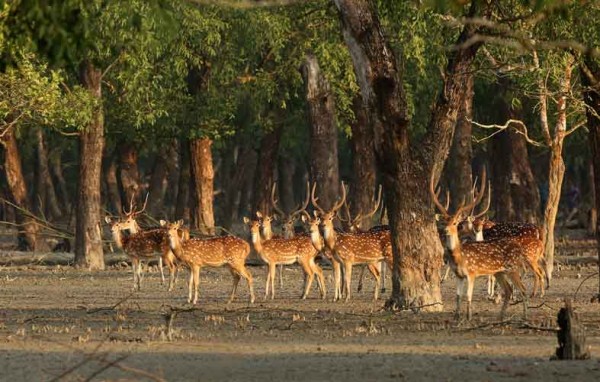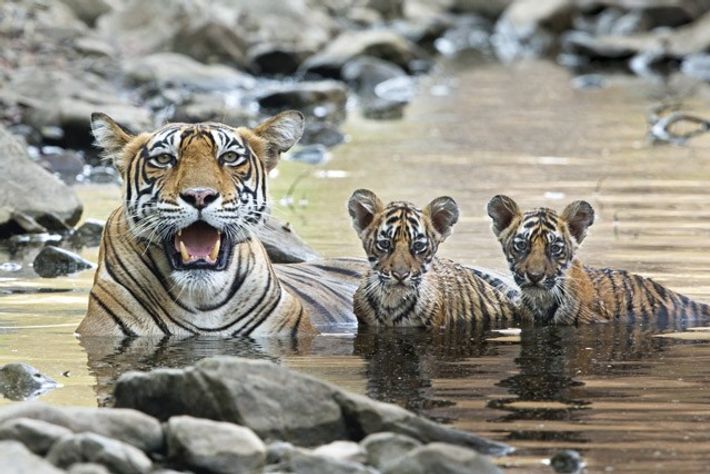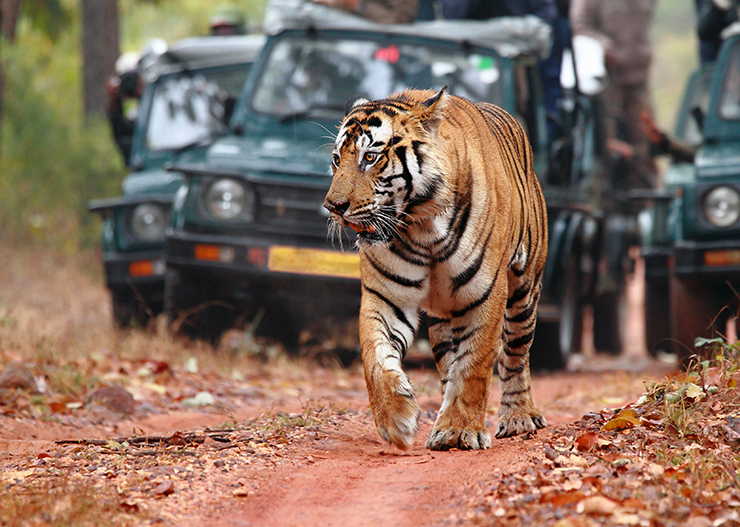


Sundarban is one of the most beautiful and ecologically rich parts of India, located in the state of West Bengal. This beautiful landscape is home to the world's largest mangrove forest, and is part of the UNESCO World Heritage Site.
The Sundarban forest is home to several endangered species, including the Bengal tiger, the estuarine crocodile, the Gangetic river dolphin, the salt-water crocodile, the Indian python, the Indian spotted deer, and the Indian flying fox. The Royal Bengal Tiger is the most iconic and celebrated species found in the Sundarban and many of the other species found here are equally endangered.
The Sundarbans is also home to a large number of bird species, including many migratory birds. The region is also popular for its honey and fish. Many of the locals depend on the mangrove forests and their resources for their livelihood.
The region is also a popular tourist destination and is home to several eco-tourism activities such as bird-watching, boat rides, and nature trails. The region is also home to the Sunderban Tiger Reserve, which is India's first and only mangrove Tiger Reserve.
Sundarban is the ideal destination for nature lovers, wildlife enthusiasts, photographers, and adventure seekers. Visitors can explore the unique mangrove forest, witness the majestic Royal Bengal Tiger, and enjoy the picturesque views of the Bay of Bengal. The waters of Sundarban are also ideal for a variety of water activities like swimming, kayaking, snorkeling, and fishing.
The nearest airport to Sundarban is Kolkata, which is well-connected to major cities in India. From Kolkata, you can take a bus or a train to reach Sundarban. The nearest railway station is Canning (West Bengal) which is well connected to major cities like Delhi, Mumbai, Chennai, and Kolkata.
If you are looking to explore Sundarban in the most convenient and cost-effective way, you can take a cab from Kolkata. The approximate distance from Kolkata to Sundarban is 100 km and takes about 3-4 hours depending on the traffic.
You can also take the ferry from Kolkata to Sunderban. There are several ferry services available from Kolkata to Sunderban that run daily. The journey takes about 5-6 hours to reach Sundarban.
You can also take a boat journey from Godkhali, which is the closest point of entry to the Sunderban Tiger Reserve. The journey takes about 2-3 hours from Godkhali to reach Sunderban.
The climate of Sundarban, West Bengal is tropical. Summers are hot and humid while winters are mild and comparatively dry. The best time to visit Sundarban is from November to February. During these months, the temperature is relatively cooler and the humidity is lower than the rest of the year.
The months of December and January are the best to visit Sundarban as the cool weather is ideal for exploring the wildlife of the region. It is also the peak season for spotting tigers. The monsoon season from June to September is a great time to enjoy the beauty of nature, as the lush greenery of the forests is at its best.
The months of October and early November are also good times to visit Sundarban as the weather conditions are still favourable. However, it is best to avoid the summer months of March to May as the temperatures and humidity levels are high.
Overall, the best time to visit Sundarban is from November to February when the climate is pleasant and the wildlife is abundant. It is also the best time to spot tigers in their natural habitat.
A trip to Sundarban should ideally last for 3-4 days, with each day focusing on a different part of the forest.
Day 1 should start with a boat ride through the Mangrove forest, exploring the creeks and rivers and spotting the diverse wildlife of the region. A trip to the Sajnekhali Bird Sanctuary is highly recommended, where you can witness a variety of exotic birds, reptiles, and mammals.
On Day 2, you can explore the Sunderban National Park and its surrounding areas. This is the perfect opportunity to experience the beauty of the forest, as well as the local culture. You can also take a river cruise to explore the surrounding islands and creeks.
On Day 3, you can visit the village of Gosaba, located on the banks of the Ganges. Here you can witness the local culture and lifestyle of the villagers, as well as explore the nearby fishing village of Frazergunj.
Finally, on the last day, you can take a trip to the nearby city of Kolkata. This is the perfect way to end your trip and explore the city's vibrant culture and attractions.
To sum up, the ideal duration to stay in Sundarban is 3-4 days. This is enough time to explore the different facets of the forest, as well as experience the culture and lifestyle of the locals.
When it comes to places to stay in Sundarban, there are plenty of options available. Here are some of the best places to stay:
1. Sundarban Jungle Camp: Located in the heart of the Sundarban Tiger Reserve, this camp is a great place to stay if you want to experience the true beauty of the region. It offers comfortable accommodation with all the modern amenities, including a spa, a pool, and a restaurant.
2. Sundarban Resort: This resort is situated on the banks of the Bay of Bengal and features a range of comfortable and modern accommodation options. The resort also offers a range of activities, from boating, fishing, and bird watching to jungle safaris.
3. Sundarban River Lodge: Located on the banks of the Matla River, this lodge is a great place to stay if you want to experience the backwaters of the Sundarban. The lodge offers comfortable accommodation with all the modern amenities, including a spa, a pool, and a restaurant.
4. Sundarban Tree House: This unique accommodation option is situated atop a tree and offers stunning views of the surrounding mangrove forests. The tree house is a great place to stay if you want to experience the true beauty of the region in a unique and special way.
5. Sundarban Jungle Retreat: This retreat is situated on the banks of the Sunderban Tiger Reserve and offers comfortable accommodation with all the modern amenities, including a spa, a pool, and a restaurant. The retreat also offers a range of activities, including boating, fishing, and bird watching.